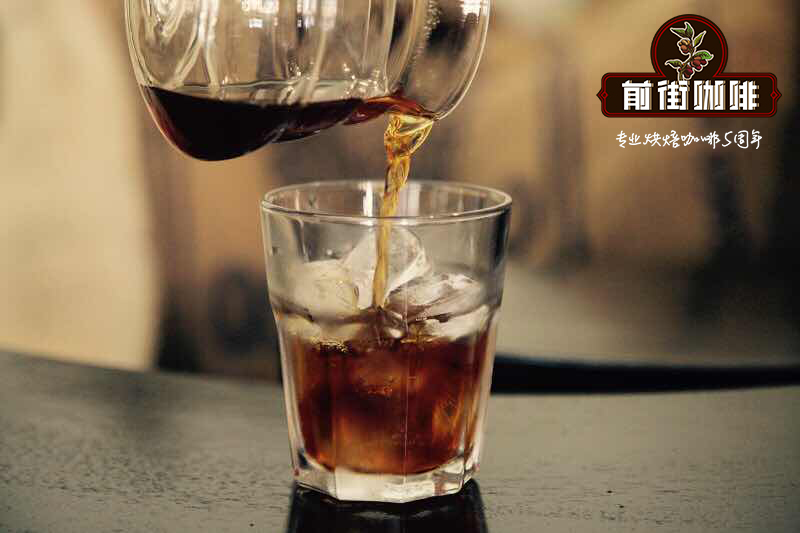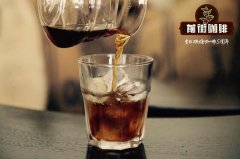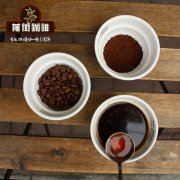What are the flavor characteristics of [bourbon species] in Galapagos, MANABI province, Ecuador? How to cook

Professional coffee knowledge exchange more coffee bean information please follow the coffee workshop (Wechat official account cafe_style)
What are the flavor characteristics of [bourbon species] in Galapagos, MANABI province, Ecuador? How to cook Ecuadorian coffee beans?
About 1000Km off the west coast of Ecuador in South America, the archipelago directly below the equator in the Pacific Ocean is Ecuador's Galapagos archipelago. The coffee produced here is rare and seldom circulated among ordinary consumers. The archipelago is recognized as a nature conservation area by the United Nations Educational, Scientific and Cultural Organization (USECO). The relevant law expressly stipulates that no chemicals or fertilizers can be used on the whole island, and of course, it is recognized by the OCIA of the United States as the place where organic coffee is produced. The coffee-growing area is concentrated on an island called San Cristobal, with a height of about 800m Mel 1200 m. Due to the island climate, the planting area is covered with thick clouds all the year round and has a dense variety of plants. Galapagos coffee, which is regarded as a treasure by coffee players all over the world, is grown in this primitive and natural super-perfect ecology. According to the relevant literature, French agronomist Don Manual Gobo brought Borubon seeds here in 1875 to open the coffee history of the Galapagos Islands. For a long time, these coffee trees were idle in the forest and allowed them to grow. It was not until 1990 that the Gonzalez-Duche family took over the reorganization. At present, the full name of the manor is "Hacienda El Cafetal San Cristabal". The coffee produced by it is regulated by strict environmental laws and regulations from planting to post-processing. The annual output is about 1150 bags (each bag of 45kg), and the varieties planted are still the "old bourbon" species transplanted in the same year.
The Arabian Coffee Tree was first introduced to Ecuador (Ecuador) in 1952 and its coffee is of good quality, especially the coffee harvested in early June. Ecuadorian coffee beans can be divided into two varieties: Galapagos and Gigante, both of which have the characteristics of large granules and heavy weight. Ecuadorian coffee can be divided into first class according to quality (No. 1) and Extra Superior. They are mainly exported to the Nordic countries of Scandinavia.
The main problem facing coffee producers is their efforts to maintain stable quality. The coffee here is generally well-balanced and refreshing, with a unique aroma. Ecuador is one of the few countries in South America that produces both Arabica coffee and Robbins coffee. However, as the land suitable for Arabica coffee trees is decreasing, the production of Robbins coffee is gradually increasing. The best Arabica coffee comes from the Andes, especially the Chanchagu Valley (Chanchamgo Valley), which is divided into two mountains. It extends from south to north to central Ecuador.
It is estimated that compared with other countries, about 85% of the coffee plantations in Ecuador have a low unit yield, reaching only about 250 kg per hectare (sun-dried coffee beans). Brazil has a yield of 1550 kg per hectare, while Vietnam has reached 2250 kg. Only about 15% of coffee plantations are planted and harvested in a professional manner, with a yield of 750 kg per hectare.
The reason is that the vast majority of coffee trees in Ecuador are aging (about 15 to 80 years old) and, worse, lack of professional care. In many producing areas, coffee farmers scatter coffee among vast woodlands and fail to harvest professionally due to insufficient rainfall, lack of irrigation systems, lack of funding, lack of care, failure to properly deal with insect pests and diseases. The common coffee pests in Eritrea are Broca del Fruto (small heart borer) and Minador de Hojas (Liriomyza huidobrensis), while the common diseases are Mal de Hilachas (lint disease), roya (rust class disease), ojo de gallo (Ohogaro) and mancha de hierro (iron class disease).
Producing area: Ecuador / Galapagos Islands
Producer: Hacienda El Cafetal San Cristabal
Altitude: 800muri 1200m
Variety: Galapagos bourbon
Particle size: above SC17
Treatment: washing
Certification: American Organic Certification (USDA ORGANIC EP), friendly Birds
Flavor description: strong floral aroma and sugarcane sweetness, thick feeling and good acidity
Qianjie recommended cooking:
Filter cup: KONO filter cup
Water temperature: 88 degrees
Degree of grinding: small Fuji degree of grinding 4
Cooking method: the ratio of water to flour is 1:14, 17g powder, 25g water for the first time, steaming for 30s, and 238g water for the second time. The extraction time is about 2:30 seconds.
Analysis: there are not many ribs at the bottom of the Kono cup, and the filter paper clings to the filter cup to achieve the purpose of limiting air flow, which can make water and coffee powder have longer contact soaking time in the filter cup and ensure the extraction time and extraction rate of rough grinding. In this way, the coffee powder can be fully extracted, enhance the mellow taste and make the taste more concentrated.
Flavor: well balanced, clean, thick and solid on the palate, with a long dark chocolate finish.
Important Notice :
前街咖啡 FrontStreet Coffee has moved to new addredd:
FrontStreet Coffee Address: 315,Donghua East Road,GuangZhou
Tel:020 38364473
- Prev

How much is Blue Mountain Coffee 100g? Jamaica Blue Mountain Coffee R.S.W. What coffee does it contain?
Professional coffee knowledge exchange More coffee bean information Please pay attention to coffee workshop (Weixin Official Accounts cafe_style) How much is authentic Blue Mountain coffee 100g? Jamaica Blue Mountain Coffee R.S.W. What coffee estates does it contain? How to distinguish true blue mountains? R.S.W. Blue Mountain Manor is located in the mountains southeast of Jamaica. R.S.W. refers to its Resource, Sherwood Fore
- Next

What are the flavor characteristics of Ecuador [Galapagos Islands coffee beans] bourbon varieties? Ecuador
Professional coffee knowledge exchange more coffee bean information please follow the coffee workshop (Wechat official account cafe_style) Ecuador [Galapagos Islands coffee beans] bourbon variety flavor characteristics? How to grow organic coffee beans in Ecuador? Ecuador is between Colombia and Peru, and Ecuador, which passes through the equator, produces Arabica coffee in South America.
Related
- Detailed explanation of Jadeite planting Land in Panamanian Jadeite Manor introduction to the grading system of Jadeite competitive bidding, Red bid, Green bid and Rose Summer
- Story of Coffee planting in Brenka region of Costa Rica Stonehenge Manor anaerobic heavy honey treatment of flavor mouth
- What's on the barrel of Blue Mountain Coffee beans?
- Can American coffee also pull flowers? How to use hot American style to pull out a good-looking pattern?
- Can you make a cold extract with coffee beans? What is the right proportion for cold-extracted coffee formula?
- Indonesian PWN Gold Mandrine Coffee Origin Features Flavor How to Chong? Mandolin coffee is American.
- A brief introduction to the flavor characteristics of Brazilian yellow bourbon coffee beans
- What is the effect of different water quality on the flavor of cold-extracted coffee? What kind of water is best for brewing coffee?
- Why do you think of Rose Summer whenever you mention Panamanian coffee?
- Introduction to the characteristics of authentic blue mountain coffee bean producing areas? What is the CIB Coffee Authority in Jamaica?

